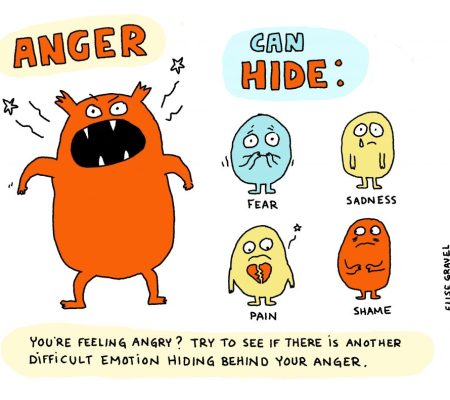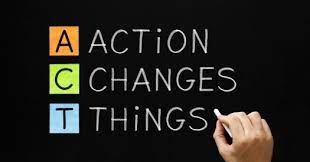
Recap
In last week’s post, we explored the idea of spin-off, a term Pema Chödrön, a Buddhist nun and teacher, uses to describe the tendency of the mind to add layers of stories and narratives around our experiences of pain. When we encounter a challenging or painful situation, our minds often react by spinning into added layers of thoughts that deepen our emotional response and lead to suffering. Suffering arises anytime we think things should be different than how they are. We resist our pain when our mind spins into judgment, fear, rage, jealousy, anger, overwhelm, blame, or shame. We could avoid all of these added layers of thoughts and emotions that result in suffering if we were willing to sit with our initial experience of pain rather than fight against it.
We discussed the importance of recognizing when our minds are in a state of spin-off and learning to stay present with the raw experience of pain by acknowledging how we feel. Then, we can avoid projecting our pain onto others. We can give up the battle of trying to rid ourselves of pain by blaming others or the world by developing a connection with it. Lastly, we can show up in the world with more compassion and constructively meet life’s challenges rather than unconsciously become what we condemn and add layers of hurt to the world. (Read the post here)
This week’s blog post will discuss how different emotions unknowingly pull us into suffering, how befriending these emotions loosens their control over us, and ways to combat spin-off to help end the cycle of suffering in our lives.
I Know Anger

Uncontrolled boiling in the chest. An impatient and volatile mind. A slow build of discontent and restlessness that fluctuates and accelerates the rhythm of my breath. These signals are what I know to be the nature of anger.
I have known anger most of my life. I used to run from it or attempt to hide its presence until I realized this only compounded my anger. Resistance and avoidance added coal to anger’s fire. My anger would grow inside me as my mind became consumed by all it could seek out to keep its energy going.
Now my anger has been more of a companion than an enemy. I continue to learn from it rather than let it overtake me. I am its student instead of its victim. Sometimes, I willingly walk next to my anger and let it guide me to places within me that need my attention. Other times, I continue to wrestle against it until, once more, anger reminds me my fight is a losing battle that leads to nowhere. “Let go.” It whispers to me. But I cannot always hear its teachings over my endless mind drama and restlessness. I must get still and quiet enough to get back in touch with my anger. One of the biggest challenges I continue to face when interacting with anger is moving from reactivity in my mind and body into a place of openness and space in my heart. It is a turbulent yet critical relationship.
In my attempt to befriend my anger, I have learned that at its root is not rage but deep sadness. Beside anger stands my vulnerabilities, insecurities, and hurts. A finger-length distance from my anger lies my feelings of defeat despite my great efforts. My anger sits alongside my overwhelm, anxiousness, and disappointment. I know anger as an exaggerated and intensified depiction of my fears, like not being good enough and falling short. Or fear that I am not a good mother, spouse, sister, daughter, or friend. Fear that I am not supported or feel disconnected. Fear that I won’t succeed or that I am doing life wrong. Fear of uncertainty and my lack of control. Fear of putting myself in front of others to be judged. Fear of the impermanence and provisional parts of life. Fear of my death or the death of others. A fear of knowing we could be taken from this Earth against our will at any moment. My anger stands in front of these fears. It serves as my protector from these painful parts of myself. But like a well-meaning mother who longs to protect her child from the misery of the world, anger cannot prevent us from experiencing pain. It is a necessary part of our human life.
I am learning to listen to my anger rather than push it down, fight against it, or jump to outward reactions. When I fail to process anger and let it overtake me, I often feel embarrassed and ashamed. Or even humbled by the reminder that I have much to learn before I master it. It grounds me. There is endless growing and healing to be done. I am not ahead of anyone else.
Get To Know The Nature of Emotions

Anger may not be a predominant emotion for all of us. Some of us may know emotions like worry, loneliness, self-loathing, depression, anxiousness, or overwhelm more than anger. Or perhaps we know multiple emotions as primary drivers in our lives. The trick to befriending any emotion remains the same despite the one we carry around with us the most. We must become more aware of the nature of our emotions rather than hide from them. No emotion intends to become our enemy, so there is no reason to fight against them. There is nothing wrong with us for feeling them. In fact, their signals are imperative and how we learn to recognize parts of us that need our love and attention. Once we befriend our emotional states, they lose their power over us. All our emotions, like anger, can become our teachers to help us gain power over our lives and transform our pain and suffering into love and constructive action.
We can begin to slow our reactions to anger, and all of our emotions, by learning to understand them within ourselves. We can study ourselves and our emotions as a way to extend these teachings to our minds so we can learn to move in a different direction the next time we encounter them. If we can catch the first sensation of any painful emotion, just as our minds begin to take hold of it and spin off into unwarranted fits of rage, then we can have agency over our reactions to them. We can choose to surrender. To play offense where there is nothing to defend.
For me, the nature of anger can be quick. It often overtakes me before I have the chance to pause and acknowledge it. Instead, I react to it and show up in ways that I don’t characterize as my highest self. Anger appears to be a more reactive energy. It feels dense and brings with it pulsations that manifest in my chest. My shoulders and neck tighten. These tension patterns travel throughout my body to my hands and face. My breath quickens and becomes nonrhythmic. My mind spins looking for ways to continue to feed my anger to prevent it from dying.
Our pain can teach us to understand and love ourselves more. All of our hurts, fears, sadness, insecurities, shame, and resistance so they, too, can pass through us. We don’t have to hold on tightly and spin into stories about what our emotions mean about us. We are simply humans having a human experience and feeling the full spectrum of emotions is a part of our time here. We can bring painful and active emotions into the safe space of our internal attention and acknowledge them to soften their reactive blow. “Thank you anger for showing me there is something beside you that needs my attention. Thank you for your attempts to protect me. I feel you in the heaviness and heat of my chest. I see how you have caused my breath to accelerate and fluctuate. I notice my mind desperately wanting to hold on to you and justify your presence. What is it that needs my attention?”
We can disarm all of our painful emotions by understanding them with greater awareness and acceptance. Nothing has gone wrong. Our emotions offer whispers of guidance. What is it that they want to tell us? Breathe into the heaviness and release this weight with each breath out. Breath by breath, our pain will dissipate, and the true source of our anger, overwhelm, depression, worry or loneliness will begin to reveal itself to us. Like an inner child, we can finally attend to these parts of us that cry out for our love and attention.
End The Spin Cycle Step 1: Awareness

The first step to ending our inner suffering and ending unnecessary conflict in our minds is to become aware when we are in a state of spin-off. Day to day, we experience different emotions within ourselves that cause us to spin-off. One indicator that we are in spin-off is when our physiology changes- such as our breath, voice, and internal sensations. Silky and smooth breathing transforms into choppy, jagged fluctuations. Our bodies tense up and feel heavy. Then, our minds follow these tension patterns, and we blame, judge, or criticize ourselves, others, or the outside world.
Or perhaps we try to avoid being in our bodily experience. The heavy, burning, restless feeling is too much for us to handle. Instead of reacting, we avoid our inner bodies by scrolling on our iPhones, eating, drinking, online shopping, etc. We do anything we can to temporarily numb ourselves because we don’t want to go back into our bodies.
Eckhart Tolle says, “To end the misery that has afflicted the human condition for thousands of years, you have to start with yourself and take responsibility for your inner state at any given moment. That means now. Ask yourself, ‘Is there any negativity in me at this moment?” Then become attentive to your thoughts as well as your emotions.” Do this without judgment.
Step 2: Name The Emotion and get to Know Its Nature

After we become aware that we are in a state of spin-off, we can slow down and get in touch with our pain. What emotion are we resisting or avoiding? What emotion is driving our thoughts or reactions? Name it. Then, identify what this emotion feels like in the body. What is its texture, weight, or color? What does its energy feel like? Where is it located in your body? Does its sensation extend to other parts of your body?
Although our pain can serve as a great teacher, it requires us to pay enough attention to it and get to know it without judgment. Understanding the nature of emotions within ourselves will extend to understanding these emotions within others. Then, we can find compassion and forgiveness for others rather than allow painful emotions to fuel our reactions. Love can flow from us instead of letting fits of rage and judgment spill out of us and onto others.
Step 3: Decide If You Want To End Your Spin-Off

After we notice we are in spin-off, we have to decide if we want to interrupt our stories and take responsibility for our pain. This decision requires us to accept our pain. We don’t have to like it, but we must accept it as a part of our current reality. When we take care of our spin-off, we are less likely to be in a state of reactivity. Then, we don’t ask other people to take care of our negativity for us.
We can also decide to continue to fight for our righteous perspective. If we let ourselves remain in spin-off, the next thing we know, we seek out someone to yell at, blame, complain to, or judge. Or we take our rants to the internet and comment on the terrible state of the world. Our pain turns into emotional labor for someone else, and we fail to see it as our responsibility.
We can reflect and inquire about how our state of spin-off might provide some form of pleasure. For instance, anger might seem less painful than experiencing hurt. Or passing judgment might falsely boost our ego by making us feel superior rather than acknowledging where we fall short. Feeling right may offer more comfort than confronting our vulnerabilities and pain. Instead of addressing our pain, we consciously choose to cling to our negativity because it, in some way, fulfills a purpose. We have to determine what that purpose is and then truthfully decide if our negativity and stories feeling it is still worth holding on to.
Step 4: Breathe

If we decide to rid ourselves of negativity, we can use our breath to help us do so. Connecting with our pain requires us to notice what is happening inside our bodies. We can enter the entire interior space of our bodies just by breathing into it. Our pain can be released from our internal systems with each breath out.
A deep and long inhale can show us where we are holding our pain. We can scan inside our bodies at the top of our inhale and notice where we are holding tension or contracting. This area of contraction creates spin-off in our minds. We want to breathe into this tension rather than resist or avoid it. Breathing in deeply will help to open our bodies and our minds.
Our exhale is like a transport mechanism that lets tension leave our bodies. A long, slow breath out is like a deep sigh. Waves of sighing release can leave our bodies as we exhale. There is a space or pause between breath cycles at the end of our exhale. This pause lets us notice the feelings of openness and expansion brought on by our slow, deep, and conscious breath cycle. This pause between breaths can also give us space from our spin-off.
Stay in your body. Breathe long and slow into the uncomfortable sensations as long as necessary until the mind slows down. Breathe into tension and breathe out to release it. Physical and mental tension blossom together. By caring for our physical inner state, we can address our mental tension and release our spin-off.
Courageous Acts of Pain

If we don’t face our inner pain, we are more likely to carry a remnant of our hurt and fear within us throughout our lives and project it onto the world. We can minimize our tendency to spin off into destructive thought patterns and find our way back to peace by taking time to address the initial pain within us. When we adopt pain as our teacher, our actions become more constructive than destructive. Befriending our pain can transform our inner hurts into loving and compassionate actions that help to build a world we want to live in.
Take Action

Next time you notice anger or any painful emotion arise within you, place your hand on your heart and breathe into the manifestation of this emotion held in your body. Breathe into the heaviness and allow for an opening in the heart. Breathe out to release the weight of this emotion and allow for more space to fill with love. Acknowledge your anger, loneliness, hurt, or fear. And acknowledge yourself for courageously choosing to take care of your life.
Contemplation Points

- What are the predominant emotions of pain in your life? When do they most often show up? Describe the nature of one of these emotions.
- In your own experience, what are the signs that you are spinning off?
- How can you interrupt “spin-off” on the spot when you notice it?
- Are you committed to doing it? If so, why? If not, why? Make sure to tell yourself the truth. Do you even want to stop your spin-off and take responsibility for what belongs to you? Or do you want to continue to spin into the storyline and further add to the war inside your mind and project it onto others?
- How do you understand the difference between pain and suffering? What arises when you experiment with staying with the level of sensation of pain rather than spin-off? Do you notice yourself attempting to resist or avoid your pain? If so, why? .







